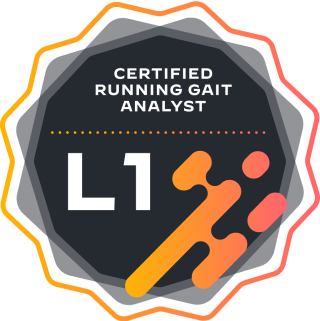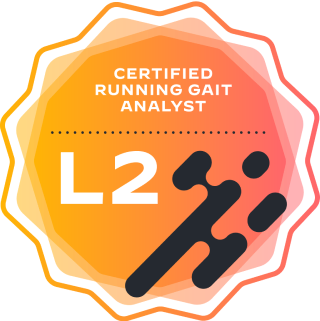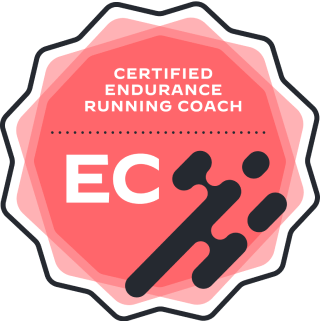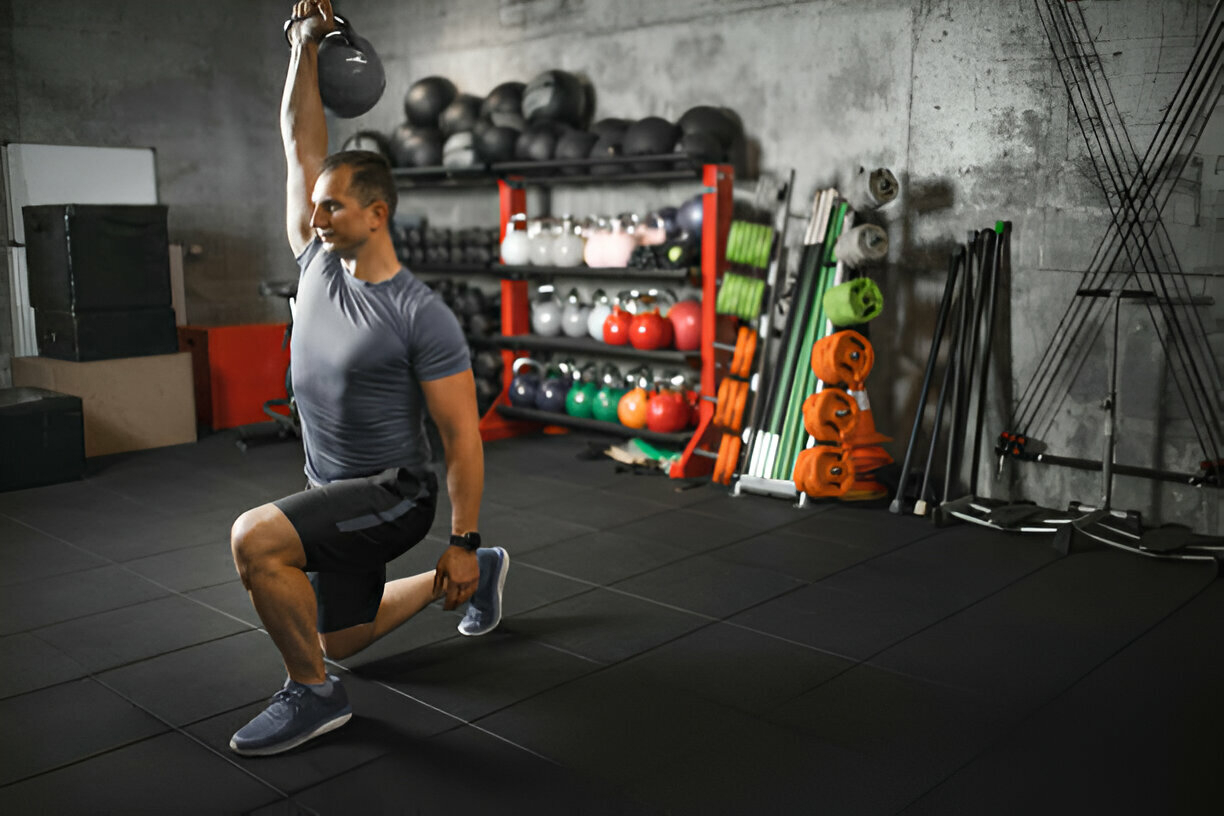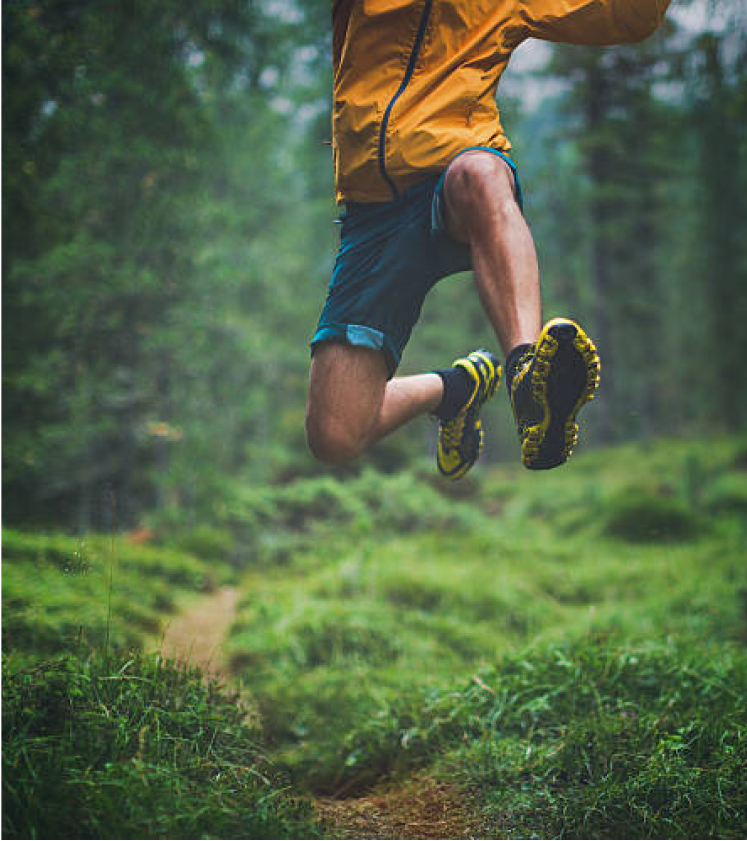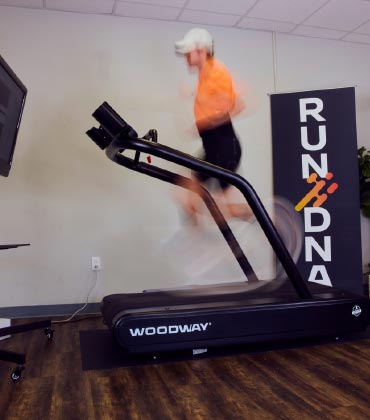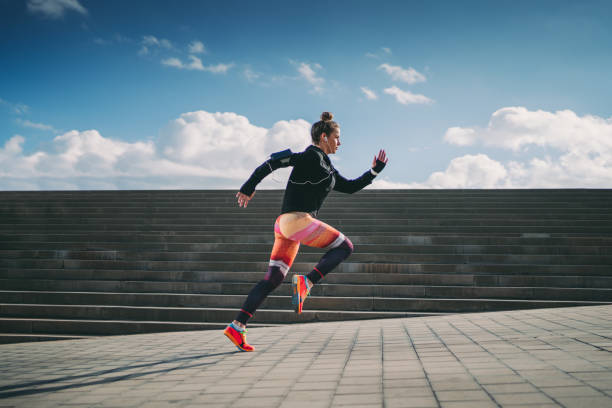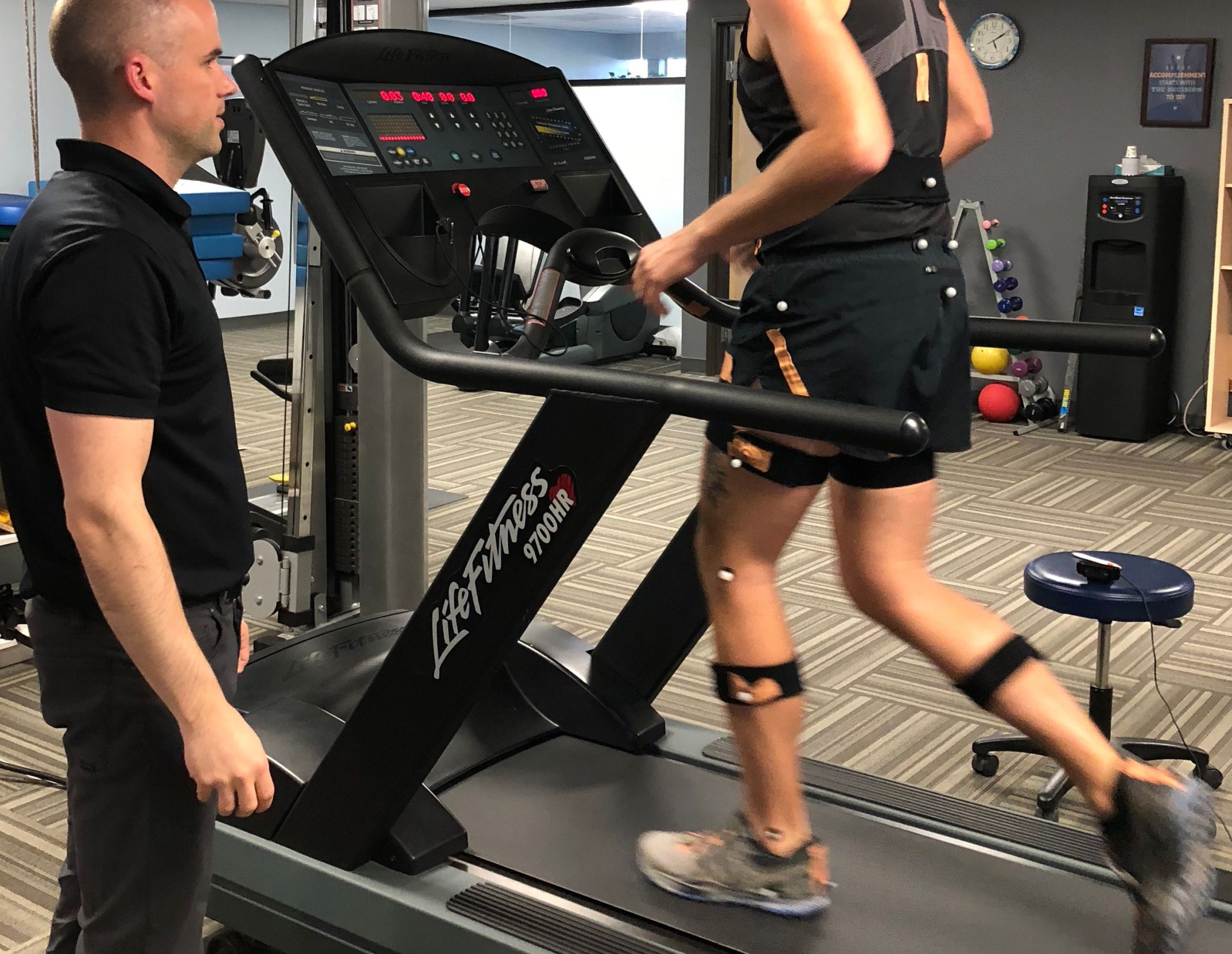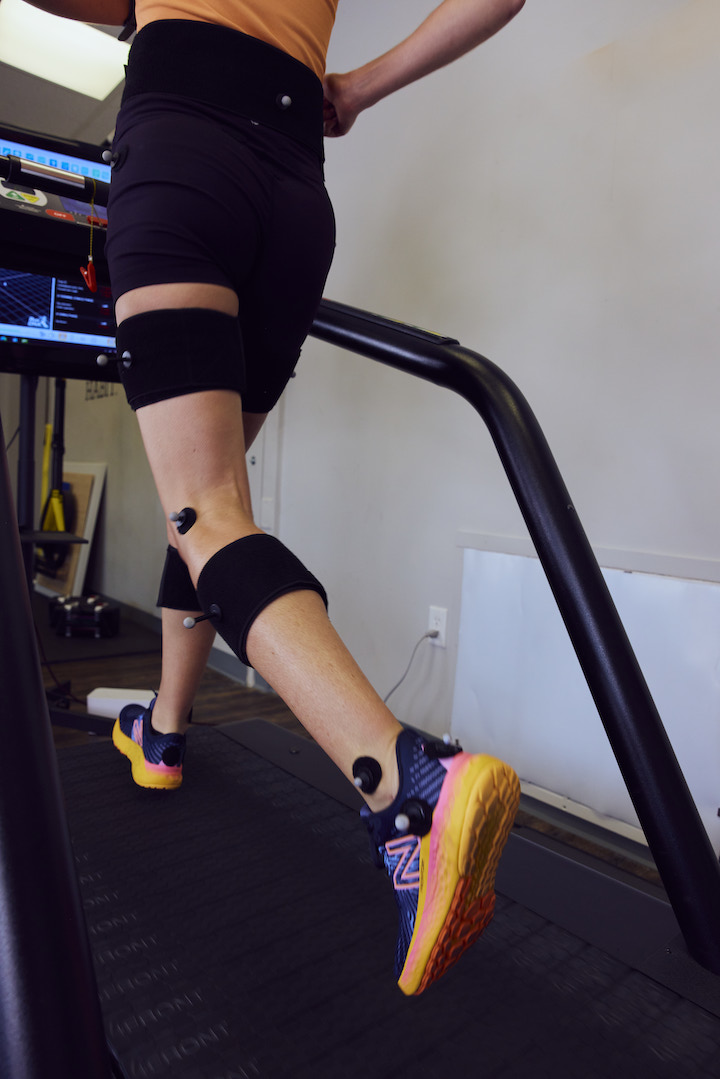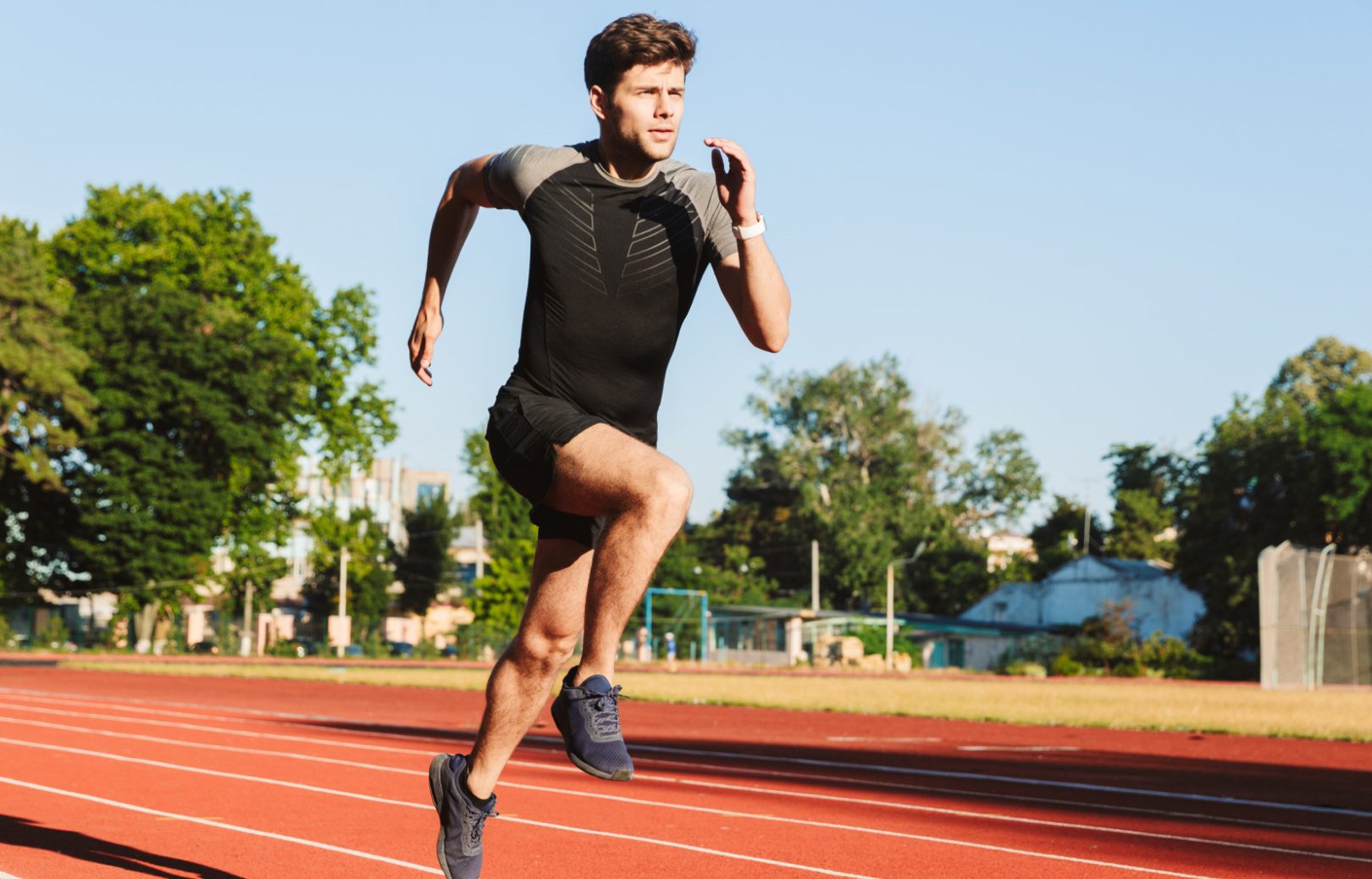This guide covers the lifting exercises for runners so they can run faster and avoid injuries.
Running is a sport where you use your legs and lungs to get from point A to point B, but don’t think it’s as simple as just moving your feet faster.
Every stride demands strong legs, a sturdy core, and balance.
To run at your best, you have to hit the weights. The right lifting exercises can unlock speed you didn’t know you had, protect you from injuries, and help you go farther with less effort.
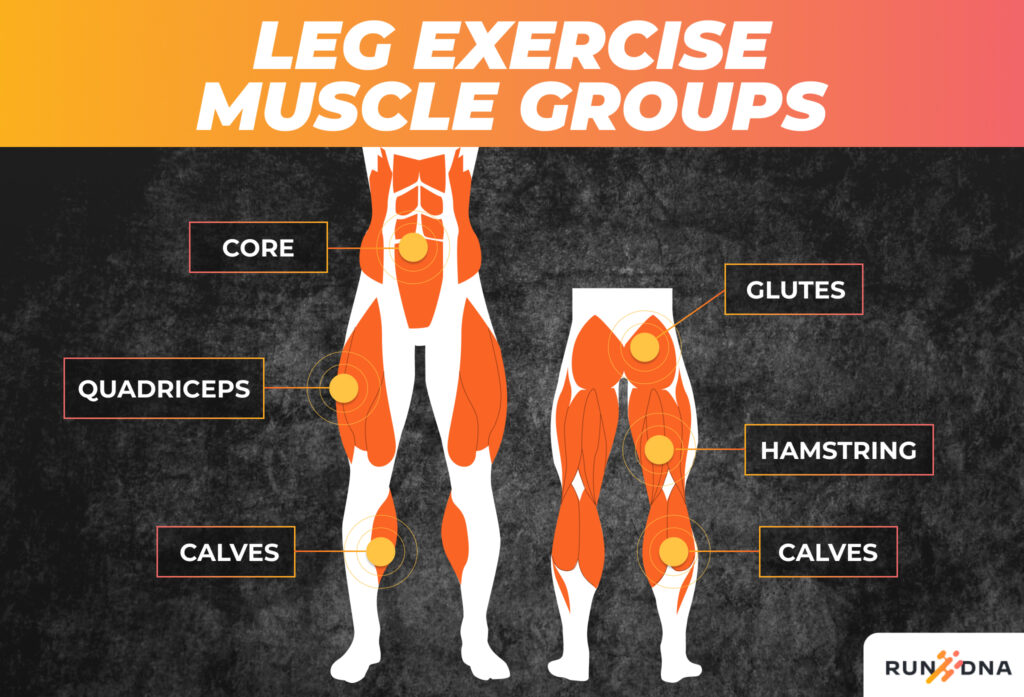
Why Do Runners Need Lifting Exercises for Optimal Performance?
Running might seem as simple as putting one foot in front of the other, but it’s actually a lot more complex. A range of muscle groups work together with each stride to propel you forward. The quadriceps, hamstrings, glutes, calves, and core play vital roles in keeping you balanced, powerful, and in control.
Building strength in these muscles not only helps with running speed and endurance, but also ensures you can handle the rigors of the sport.
And then there’s the issue of weaknesses. It’s not uncommon for runners to have muscle imbalances due to the repetitive nature of the sport.
Weak glutes, tight hip flexors, and a lack of core strength can lead to a host of issues.
Weight training for runners is essential to address these weaknesses and keep you on the road instead of on the couch.
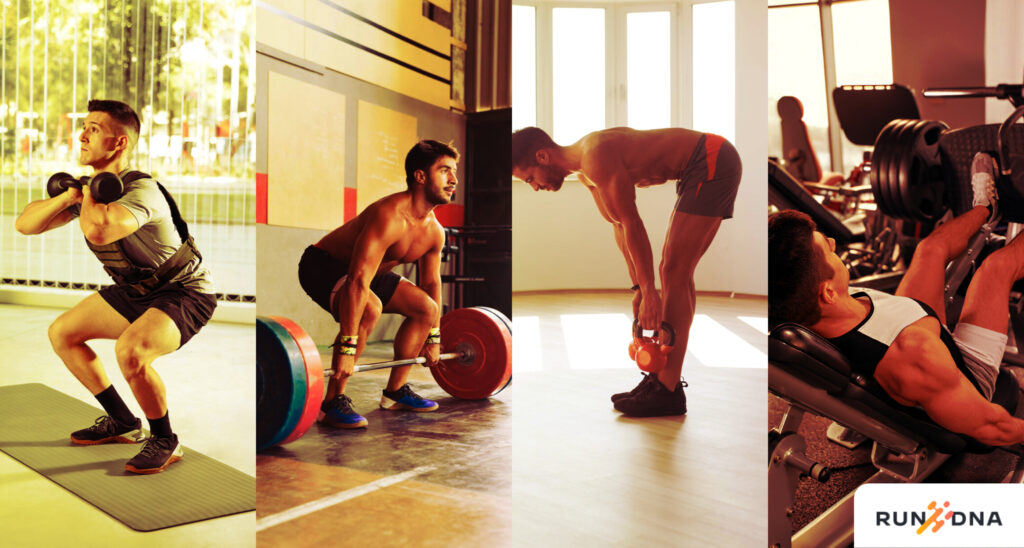
Benefits of Lifting Exercises for Runners
Whether you’re a beginner or seasoned athlete, integrating these core exercises into your routine twice a week can significantly improve muscle strength, coordination, and endurance.
- Improved Running Economy: If you want to run longer without feeling like a wheezing mess, focus on efficiency. Lifting exercises tailored to running help your muscles use oxygen more efficiently, meaning you can run farther before your lungs start crying for mercy. Building muscle efficiency and coordination is essential for any runner who wants to get serious about going the distance.
- Increased Power and Speed: Ever dreamed of shaving seconds off your personal best? Strength training sessions can give you the boost you need. By focusing on exercises that build lower body strength and power, like single-leg squats and glute bridges, you’ll see improvements in your stride, making you quicker off the mark and faster across the finish line.
- Enhanced Injury Prevention: Injuries can be a runner’s worst nightmare, often sidelining athletes for months. But a well-rounded strength training program can help bulletproof your body against common running injuries. Working on the muscles that stabilize your knees and ankles, particularly your glutes and hamstrings, will keep you running strong and injury-free.
Consult with a certified running coach for valuable guidance and proper technique training to maximize the benefits.
Core Lifting Exercises to Boost Running Performance
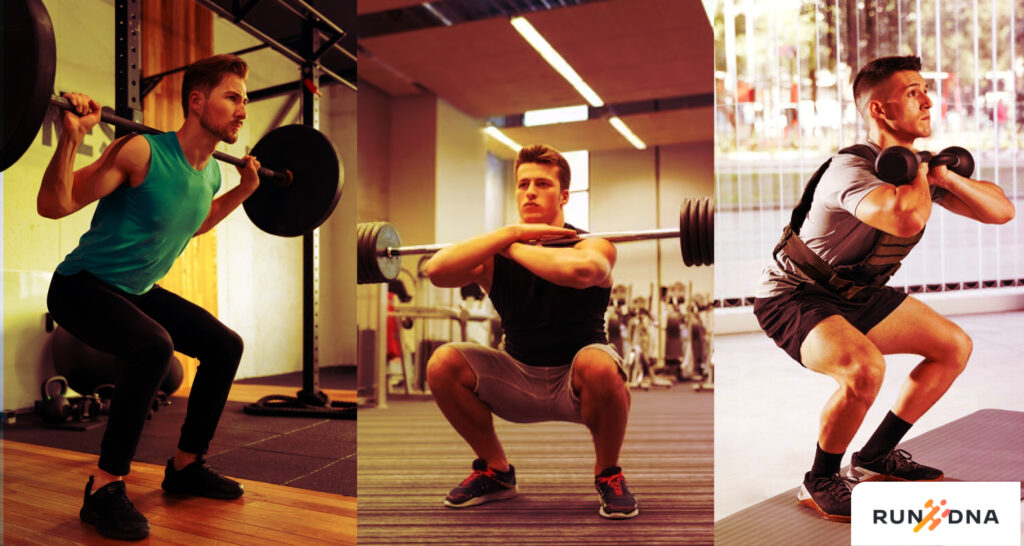
Squats for Lower Body Strength
Whether you’re hitting the back squat, front squat, or goblet squat, these exercises work wonders for building strength and improving foot stability:
- Back Squat: This classic squat variation targets your quads, hamstrings, and glutes, making it a great all-around lower body exercise.
- Front Squat: By shifting the load to the front of your body, front squats emphasize your quads and core, helping to develop balance and stability.
- Goblet Squat: Holding a kettlebell or dumbbell close to your chest, goblet squats are excellent for beginners and advanced lifters alike, focusing on form and depth.
Tips and Variations for Different Fitness Levels
- Form is Key: Keep your chest up, hips back, and feet hip-width apart. Lower yourself until your thighs are at least parallel to the ground, maintaining a straight line from your head to your heels.
- Progressive Overload: Start with bodyweight squats if you’re new to lifting, then gradually add weight as you get stronger. Experiment with different foot positions and depths to target different muscle groups.
Deadlifts to Enhance Power
Deadlifts are a powerhouse exercise for runners, targeting the posterior chain muscles essential for generating power and speed.
Deadlifts help target full-body strength, since they work your hamstrings, glutes, lower back, and core, helping to improve overall running performance and reduce the risk of injury.
- Variations: Romanian deadlifts focus more on the hamstrings and lower back, while kettlebell swings add a dynamic element to your training, building explosive power.
Presses and Pulls for Upper Body Balance
While running predominantly relies on the lower body, a strong upper body contributes to overall balance and stability.
Overhead Press for Core Stability and Upper Body Strength
- Core Engagement: The overhead press not only builds shoulder strength but also requires core stability to maintain proper form.
- Variations: Experiment with different grips and implement single-arm overhead presses to challenge your stabilizing muscles.
Pull-ups and Rows to Support Posture and Spinal Alignment
- Posture Support: Pull-ups and rows strengthen the muscles of the upper back, improving posture and stability during runs.
- Progression: Start with assisted variations if you’re new to these exercises, then work your way up to full bodyweight movements.
Advanced Lifting Techniques for Experienced Runners

Olympic Lifts for Explosive Power
Olympic lifts like the clean and jerk and snatch are advanced movements that require precision and explosive power, making them ideal for experienced runners looking for the following advantages to take their performance to the next level:
- Explosive Power: These lifts train your body to produce maximum force in minimal time, translating to faster start speeds and improved hill performance.
- Technical Mastery: Proper technique is crucial to safely perform Olympic lifts, so know how to add strength training from a qualified coach or trainer.
Plyometrics for Dynamic Strength
The following plyometric exercises are a staple for athletes looking to improve their explosive strength and agility:
- Box Jumps: Jumping onto and off a box challenges your muscles to produce force rapidly, mimicking the explosive movements of running.
- Bounding: This dynamic exercise involves leaping forward with exaggerated strides, emphasizing power and coordination.
- Depth Jumps: Start by standing on a sturdy platform or box. Step off the platform, landing lightly on the ground with both feet, then immediately jump as high as you can, reaching for the sky. This exercise enhances explosive power and helps improve your ability to generate force quickly.
- Lateral Bounds: Begin by standing with your feet hip-width apart. Jump laterally to one side, landing softly on the opposite foot, then immediately explode back in the opposite direction. Repeat this movement, covering as much distance as possible with each bound.
Incorporating Lifting Exercises into Your Running Routine
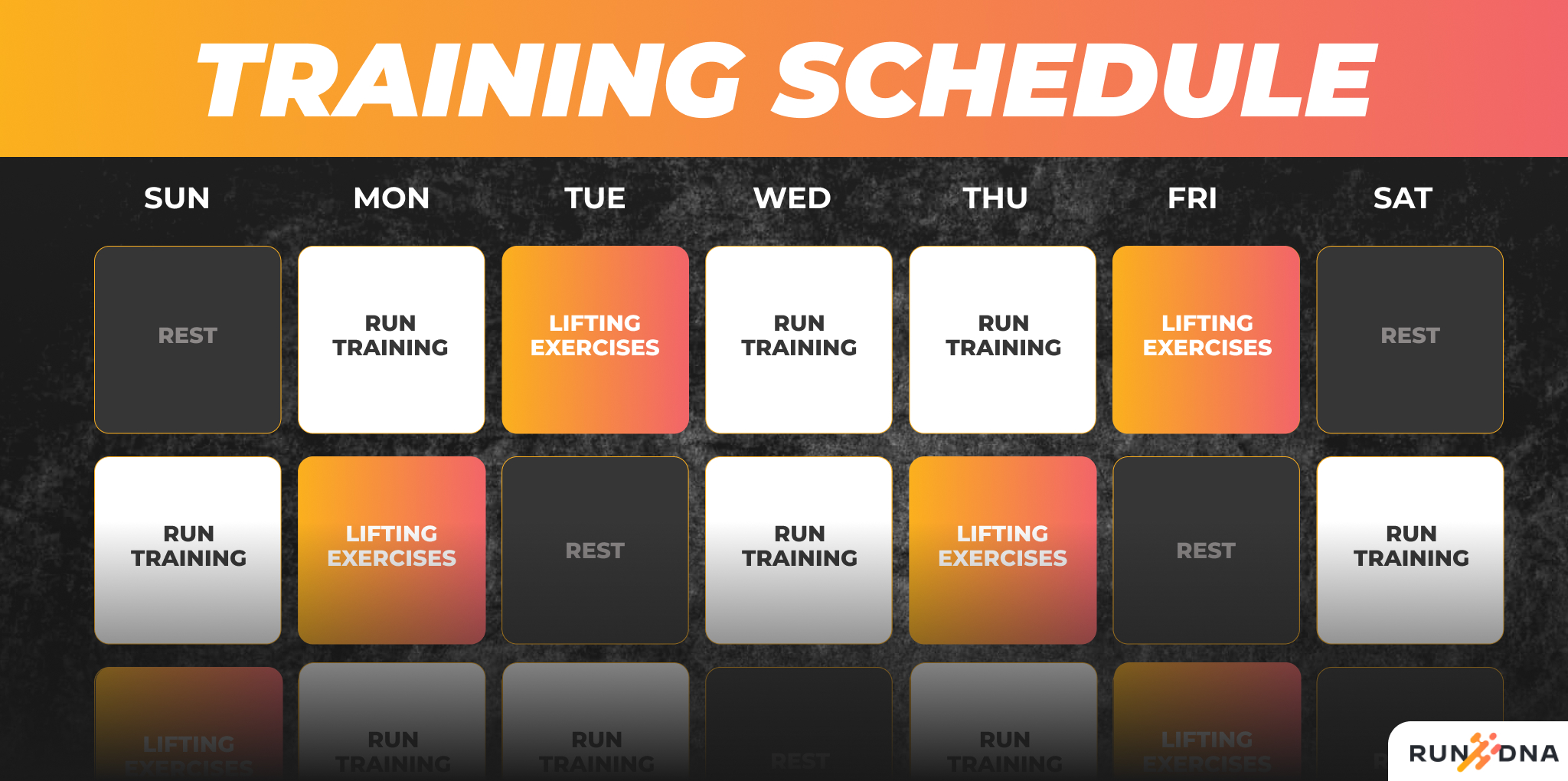
Creating a Balanced Workout Schedule
To see real progress, aim to hit the weights at least twice weekly. Pick days that work for you and stick to them.
Some folks swear by a pre-run pump to get the muscles firing, while others prefer to save the heavy lifting after logging their miles. It’s all about finding what works best for you and your schedule.
Recovery and Nutrition Tips
Don’t skip those rest days—they’re crucial for letting your muscles repair and grow stronger.
And on those rest days, don’t be afraid to move your body in gentler ways, like stretching or yoga. It’ll help keep your muscles limber and your mind at ease.
Finally, let’s talk about nutrition. What you put in your body matters, especially when asking it to do double duty with running and lifting.
Load up on whole foods packed with protein, carbs, and healthy fats to fuel your workouts and aid recovery.
And don’t forget to stay hydrated—it’s the unsung hero of athletic performance.
Final Thoughts
So, what are you waiting for?
It’s time to take your running game to the next level. Whether you’re a newbie or a seasoned pro, there’s never been a better time to start lifting.
And if you’re feeling lost, feel free to reach out to a certified trainer or coach for guidance.
Your stronger, faster, injury-free self is waiting!

